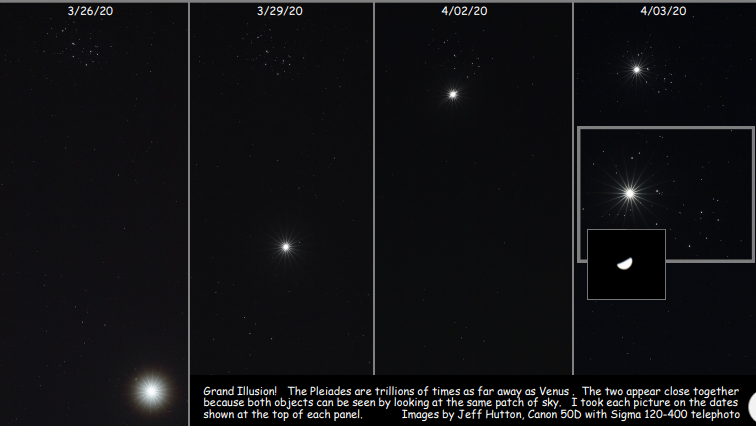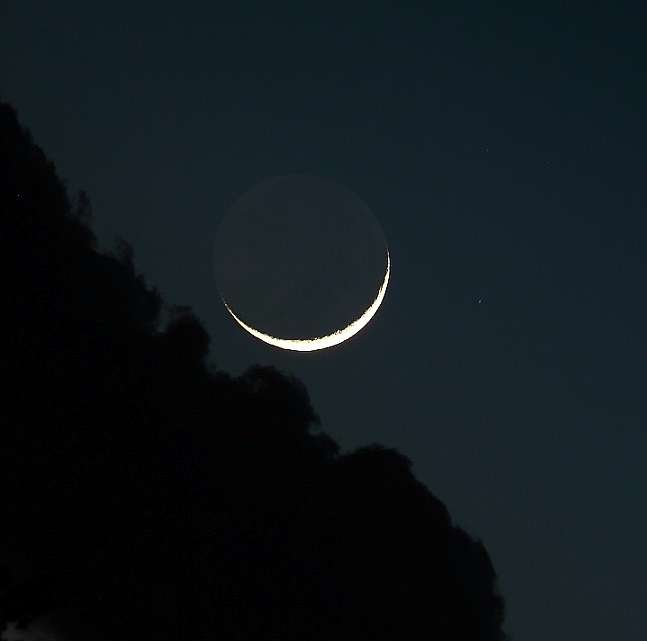No telescope needed!
Welcome to the first of a series of guides to some things to look for in the sky during the coming month. Days are lengthening, the wonders of the night sky have to wait a little longer each day to be revealed to us but they are worth waiting for!
April’s four principal phases of the moon.
April 1: First Quarter
April 8: Full Moon
April 14: Last Quarter
April 23: New Moon
“Super Moon”
The Moon’s orbit isn’t circular, but elliptical. That means that its distance to the Earth varies and that changes how big it appears in the sky. In fact, the Moon can change in apparent size up to 14%. On April 8 and at nearly the time of the full moon, the Moon will near its closest point on its orbit around Earth. That’s called ‘perigee’. The point farthest from the Earth is called ‘apogee’.
April showers are expected…(peak April 21-23)
I’m referring to the annual meteor shower known as the Lyrids. Sometimes people talk about ‘shooting stars’. Usually, they are referring to meteors. So where do they come from? When a comet visits the inner solar system, the sun’s heat causes the icy ‘glue’ that holds millions of sandy grains that make up the comet’s nucleus to release the grains. These are left behind by the comet after it returns to the cold outer regions of the solar system, just like a jet leaves a contrail in the air. As Earth orbits the sun she carries us through these ‘contrails’ of dust grains. When this happens, we have an annual meteor shower. As these grains are swept into Earth’s upper atmosphere they heat the air they fly through, making it glow. When this happens, they are then over 50 miles up and moving at up to 160,000 miles per hour! That’s the ‘shooting star’ or meteor we see. When in space, these grains are called ‘meteoroids’’. ‘Meteors’ are the streaks of light we see during a meteor shower and if you’re lucky enough to find a meteor that was large enough to make it to the ground, you’ve got a ‘meteorite’!
If you’d like to see a meteor shower, here are some hints. Where to go: a place as far away from lights as possible. When: during a predicted meteor shower that happens when the moon is less than half illuminated. Most meteors are seen between midnight and dawn so it’s better to go to bed early and set your alarm for, say, 2AM.
Finally, I’ll leave you find the answer to this question. What is the connection between the Lyrid meteor shower and the constellation, ‘Lyra’?
Lovely Venus and the Pleiades
During the evenings of early April and especially on April 3, look closely at the brilliant planet Venus, high in the western sky and near the bright cluster of young stars we call the Pleiades. Just seeing this celestial grouping reveals a beautiful sight. If you have binoculars, grab them. This event is one you’ll remember for a long time. Cloudy in early April? The same thing happens every 8 years. How do we know that? Careful observation has established that for every 8 Earth years, Venus goes around the sun 13 times, bring it to nearly the same spot in our sky every 8 years.
Remember, Astronomy is Looking Up!
-Jeff Hutton
Jeff is a long time amateur astronomer and telescope builder. He offers monthly presentations on astronomy and related topics at the FOC.


These are pictures of Comet Atlas
which is currently in the northern sky.
Most comets are dim and can
be seen only with a telescope.

